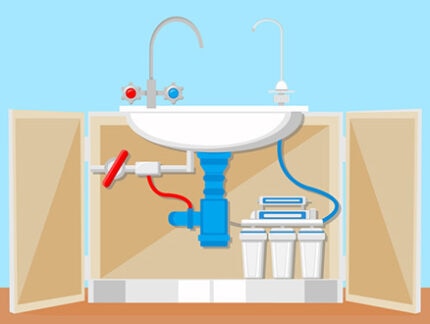If you’ve ever found yourself in the position of wondering how to test PH without a kit, we can empathize. It’s a tricky situation, but also one that places you in distinguished, highly populated company.
Convenient though they may be, water testing kits are far younger than the need to test for PH. People have been making do without them for a long time. In this article, we discuss how you can do the same. Read on for a total and complete guide on how you can test water PH without a kit.
Boil Cabbage
By boiling cabbage, you can establish a baseline that will inform your water PH level. While the approach may not be quite as precise as store-bought tests, the results are actually quite dependable and can be similar in their exacting nature.
To begin, bring a pot of water to a boil. While the water reaches a rolling consistency, begin to coarsely chop your cabbage. When the water is ready, dump the veggies in the water, and allow them to sit for about thirty minutes.
When the cabbage is done cooking, strain your solution to test the water PH. The color of the water will give you an approximate idea of your PH levels.
- Red: Red water indicates a PH level of around 2.
- Purple: Purple indicates a PH level of 4.
- Violet indicates a PH level of 6.
- Blue: indicates a PH level of 8.
- Blue/Green: Indicates a Ph level of 10.
- Blue/Yellow: Indicates a Ph level of 12.
Litmus Paper
If you do not have a full-blown testing kit, you can still make do with some litmus paper. Litmus paper is typically considered accurate but does lack the more granular information you get from a designated kit.
The major limitation of this method is that it only tells you if the water is acidic or alkaline. It doesn’t tell you how acidic or alkaline. Water PH exists on a scale, and there can be a big difference between a PH level of 8 and 14.
If you need to get the best information possible, you’ll be well-served to look for something a little more specific. However, if you are comfortable with a very basic data set, you can get it by lightly dampening a strip of litmus paper.
If the water is acidic, the paper will turn blue. If the water is alkaline, it will turn red.
Other Alternatives
Unfortunately, the best results demand the best equipment. If you are using your PH levels to make an important decision, you should most likely invest in a designated kit. However, there is a range of other products available before you get to the point of investing in a kit. Below you will find a few quick suggestions that are less expensive than a kit.
- Litmus powder: Litmus powder is a product that can be found easily online. You can combine litmus powder with a number of household products (like baking soda) to create a solution that will react to the PH levels in the water. Like the example of litmus paper above, the powder will turn blue if acidic, or red if alkaline.
- PH Reader: You can find a PH reader that tests digitally for acidic levels at many stores. Operating effectively like a thermometer, all you are required to do is insert the reader and wait for a number.
- Taste: Finally, taste. Though not scientific, nor even actionable, you can potentially determine if the water is acidic by tasting it. Water with a very low PH level will taste bitter, and potentially unpleasant. Water with a higher PH level can taste almost like baking soda. While a taste test should not be considered data it can, at the very least, provide an indication of what you are working with.
Which method you decide on may depend on why you are testing the PH levels in the first place. For example, if you are measuring PH for the purposes of a school project, any of these methods might be considered an interesting and informative experiment.
However, the more demanding the requirements of your end goal, the more advanced the kit you will want to invest in. Keep in mind that DIY approaches are more at risk of corruption from contaminants. To that end, you can better control the accuracy of your results by sanitizing all of your equipment.
Keep a tidy workspace, and wash your hands regularly throughout to make sure that the only substance winding up in the testing area is the PH level of the water.
Conclusion
These methods are definitely great in a pinch. However, at the end of the day, there is a reason that PH testing kits exist. For the best results, you really should invest in a set of equipment that you can give you optimized, specific information.
Chopping up cabbage is a handy home hack, and works great as a school project. However, regardless of how dependable the method is, it can’t quite compete with the results of the real deal.
Presently, digital PH meters are considered the best method of securing accurate results. These devices are great because the readings are clear, with no need to try and decide exactly what color you are looking at.
They also have the benefit of eliminating the capacity for human error. All digital readers ask of you is to insert the reader end into the water and wait for a number to show up. Whatever your preferred method, now that you have read this article you are well prepared to go forth and measure some PH.










